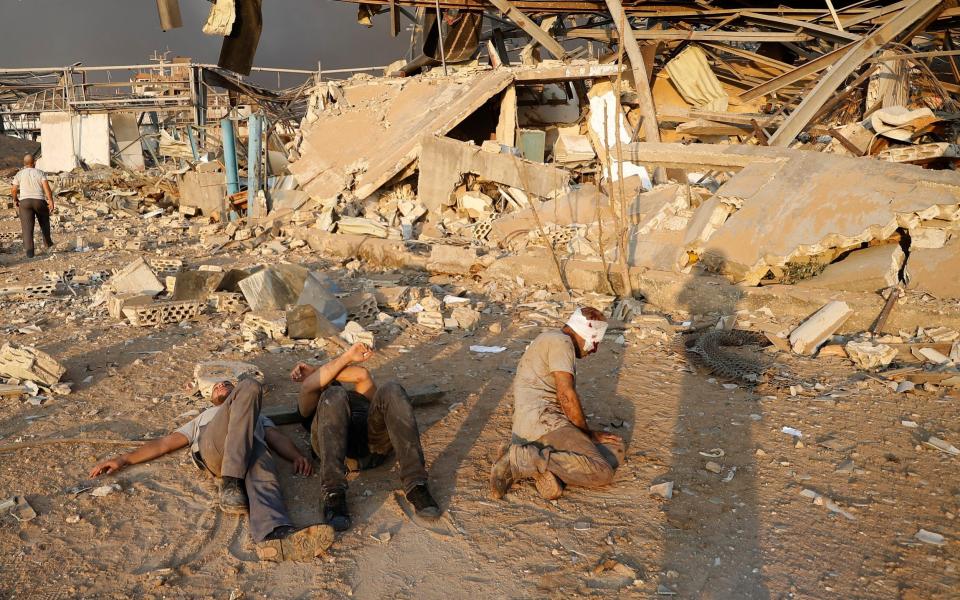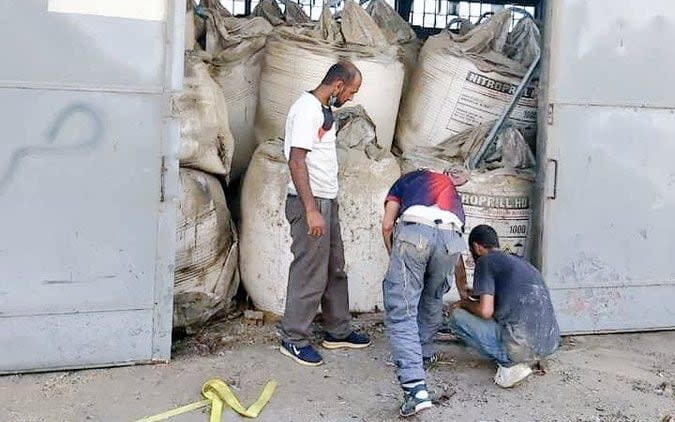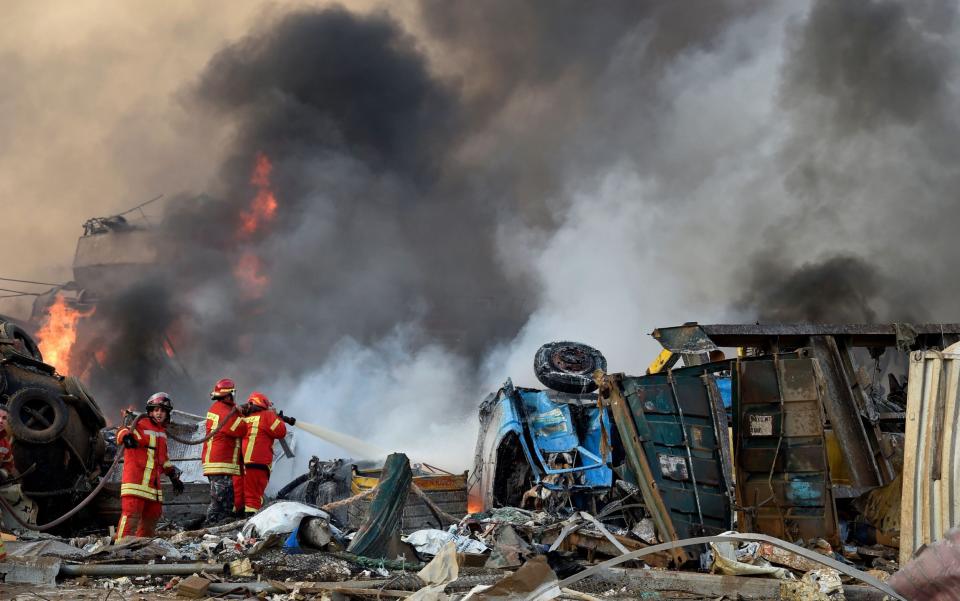Beirut explosion: How chemicals abandoned by a Russian businessman triggered a devastating blast felt in Cyprus

The timer was ticking from six years ago, when 2,700 tonnes of ammonium nitrate were taken from an impounded ship and stored in the port of Beirut. It was a massive bomb just waiting to go off; a disaster equivalent to an earthquake measuring 3.5 on the Richter scale.
At least 100 are dead and an astonishing 4,000 are injured in a catastrophe in one of the Middle East’s greatest cities. About 300,000 more are homeless.
And all because Igor Grechushkin, the Russian owner of the Rhosus ship, carrying the deadly cargo from Georgia to Mozambique, declared bankruptcy on an unscheduled stop, and was forced to abandon it there. It left the authorities with a fearsome problem, and one they appear to have dealt with by crossing their fingers and hoping for the best.

Not for nothing was ammonium nitrate, used in farming as a powerful fertiliser, the explosive of choice for the IRA during the Troubles. The high-profile mainland bombings at the Baltic Exchange and Bishopsgate in the City of London in 1992 and 1993, and the blast at Canary Wharf in February 1996, bringing the first IRA ceasefire to an end, were all fuelled by it. Even the most potent of those devices contained just one five-thousandth of the ammonium nitrate which exploded in Beirut on Tuesday.
It was also used by Timothy McVeigh in his two-tonne bomb that claimed 168 lives in Oklahoma City in 1995. And it is the Taliban’s preferred option too.
For all that, ammonium nitrate can be safely stored. It is stable, under the right conditions. There are international protocols on how much can be held, where, and under what security precautions. It must be kept away from fuel and sources of heat, and many countries require carbon carbonate to be added, which makes it safer.
Leaving it dumped in one place since 2104 and in such quantity was always likely to end badly, said Stewart Walker, associate professor in Forensic, Environmental and Analytical Chemistry at Flinders University in South Australia.

Philip Ingram, an explosives expert and former military intelligence officer, said: “Ammonium nitrate can degrade over time, all the more so if it is stored badly. If it starts to degrade, it gives off heat, and that tends to self-perpetuate. Pressure builds.”
All it needs then is an appropriate spark, serious enough ignition. The IRA used small amounts of Semtex.
Here, according to reports, it came when a welder was making repairs to improve the security at the warehouse. It is suspected that the building contained fireworks. When the explosion ripped through the port, the firefighters trying to contain the initial blaze are believed to have been incinerated.

Jeffrey Lewis, a missile expert at the Middlebury Institute of International Studies in Monterey California, said the footage supported the firework-as-ignition theory: “Some of the videos show munitions, what I call popcorning, exploding like ‘pop, pop, pop’. It’s very common to see fires detonate explosives. If you have a fire raging next to something explosive, and you don’t put it out, it blows up.”
First, the video footage shows a fire with white smoke, consistent, says Professor Walker, with ammonium nitrate burning. Then, there is a massive blast, orange and brown in colour, consistent with nitrous dioxide, given off when ammonium nitrate explodes.
And finally there is a massive white mushroom cloud, which evoked comparisons to Hiroshima, when the Americans dropped the nuclear bomb that ended World War Two in August 1945. In fact, according to Mr Ingram, it is water condensation, common in massive explosions in humid climates, created by the explosion’s massive supersonic waves.
Those waves then blasted out through Beirut, causing apocalyptic scenes of damage up to 10km away. According to reports, the blast could be heard 150 miles away in Cyprus, while the info-graphic below shows the destruction felt across the city:
Mr Ingram explains: “With high-end detonations, supersonic pressure gets magnified, and the bigger the explosion, the more it gets magnified. There are two effects: blowing and sucking.
“The over-pressure wave blows everything over in its way, and then there’s a big following dip in pressure. That sucks everything back in.
“The bigger the over-pressure wave, the bigger the under-pressure one. Floors rise on the over-pressure wave, and fall on the under-pressure, and it explains why high-rise buildings can collapse.”
What is the effect on people close to the blast?
Mr Ingram says: “It really does depend how close. But as the over-pressure wave passes over, the individual would feel the air being sucked from his lungs. And if very close, it is possible that his organs would explode. The effect is similar to being in a major car crash.
“But that will be very, very few. Most of those who have died will have been hit by falling buildings or debris, and it is the glass and shrapnel that are responsible for such a massive toll of injuries The big shortage at the hospitals will be for blood supplies.”
The nitrate came from the Rhosus cargo ship, which was carrying the explosive chemical from Georgia to Mozambique in 2013 when it made an unscheduled stop in Beirut, according to reports from the time.
While commonly used as an industrial fertiliser, ammonia nitrate is also a component in mining explosives. Mozambique has significant mineral and mining industries.
Mr Grechushkin declared bankruptcy and was forced to abandon the ship there after Lebanese authorities prevented it from sailing on, crew members said. Several sailors were stranded in the country for months.
“Owing to the risks associated with retaining the ammonium nitrate on board the vessel, the port authorities discharged the cargo onto the port’s warehouses,” a shipping report from 2015 said.
“The vessel and cargo remain to date in port awaiting auctioning and/or proper disposal.”
Lebanese customs officials repeatedly asked for the matter to be handled but said they had received no reply. The Telegraph attempted to contact Mr Grechushkin for comment.
Lebanon has not tied the Rhosus’s cargo to the blast.
Port General Manager Hassan Koraytem told OTV on Wednesday that the material had been put in a warehouse on a court order, adding that they knew then the material was dangerous but "not to this degree".
"It is negligence," an official source familiar with the findings of early investigations told Reuters, adding that the issue on storing the material safely had come before several committees and judges and "nothing was done" to order the material be removed or disposed.
Professor Walker told The Telegraph: “There were a host of circumstances which should never have been allowed to happen: there was too much in one place; it needs to be compartmentalised; to leave it there for so long is bad practice, and, of course it was a place with a high population density. It could and should have been avoided.”

